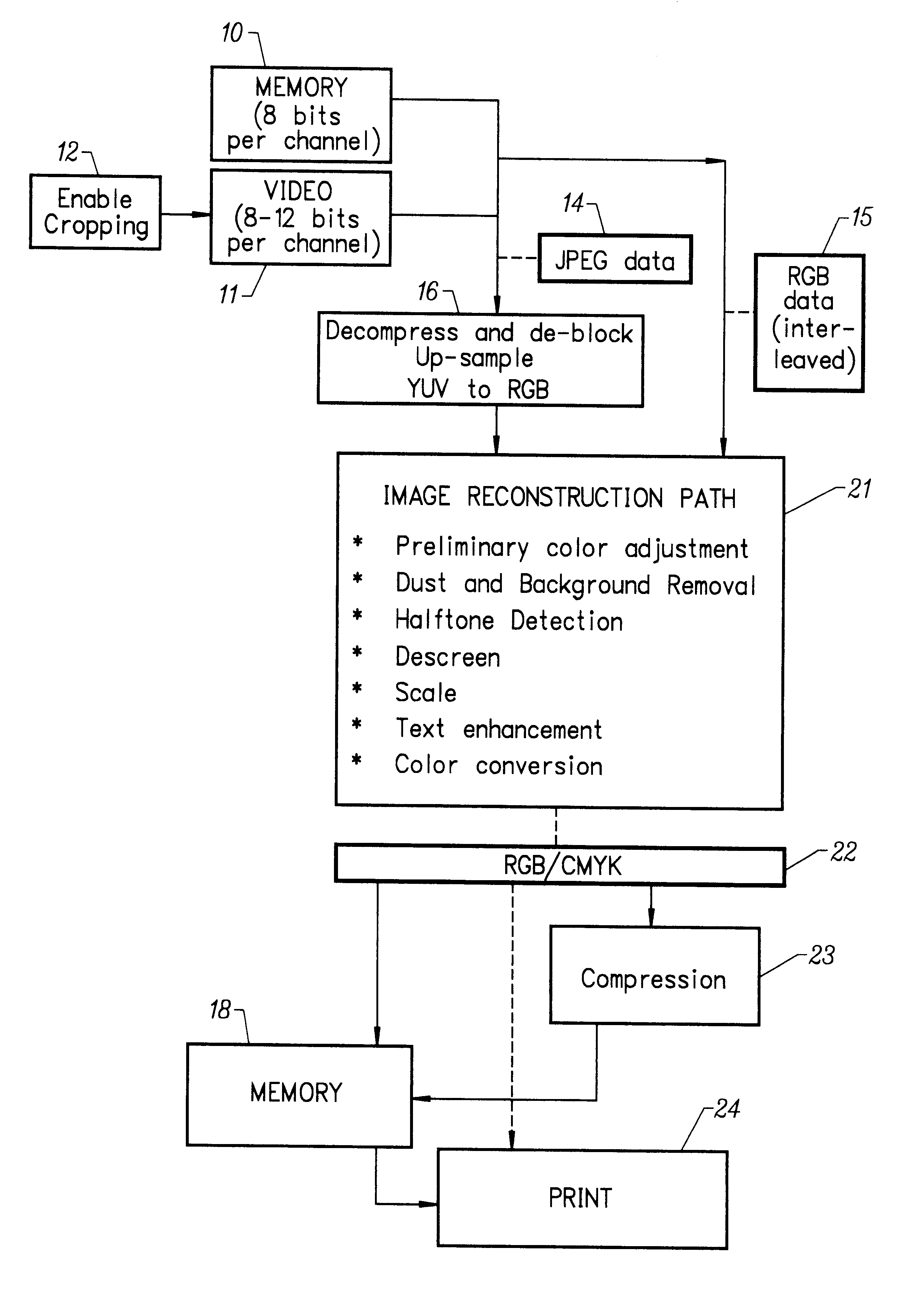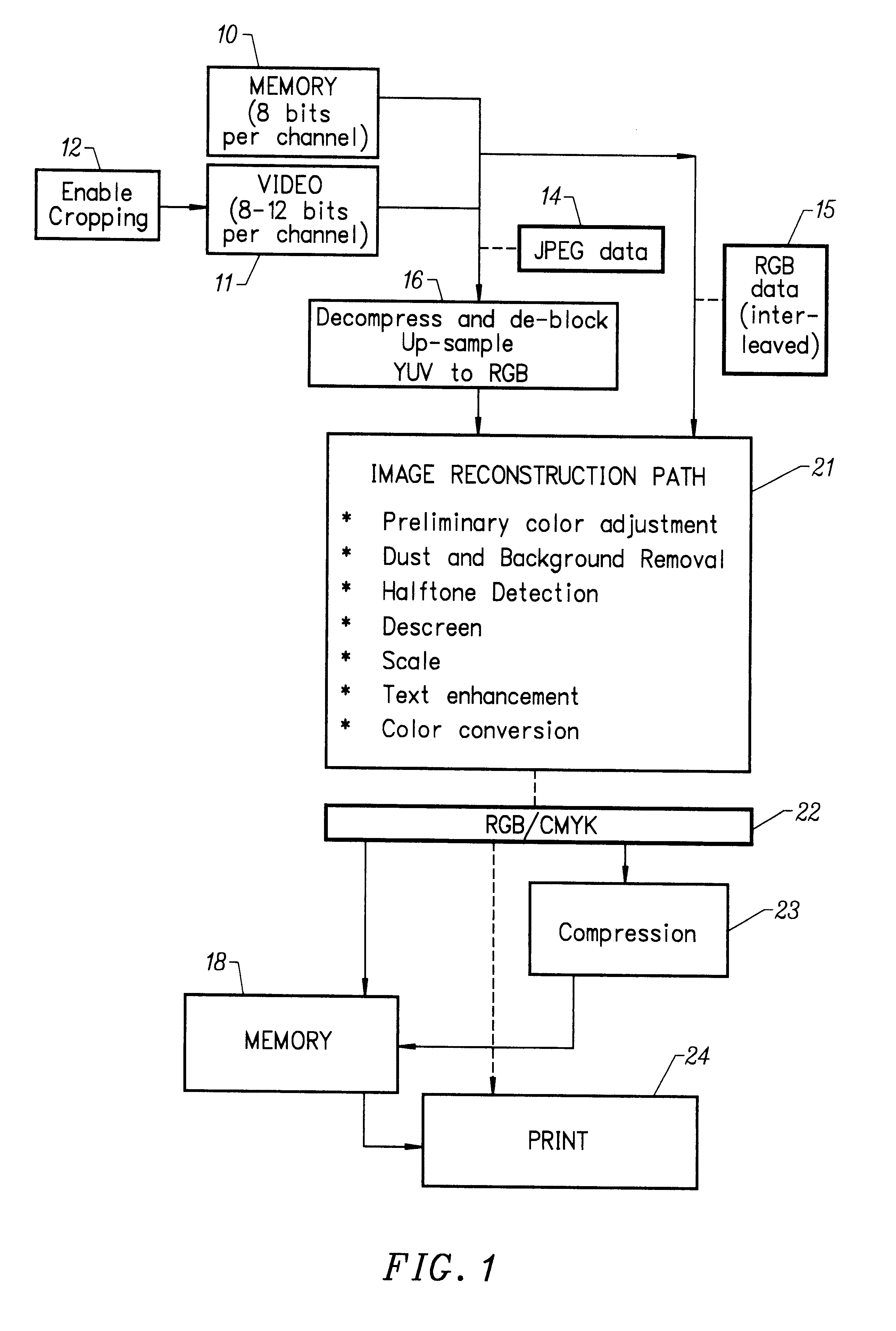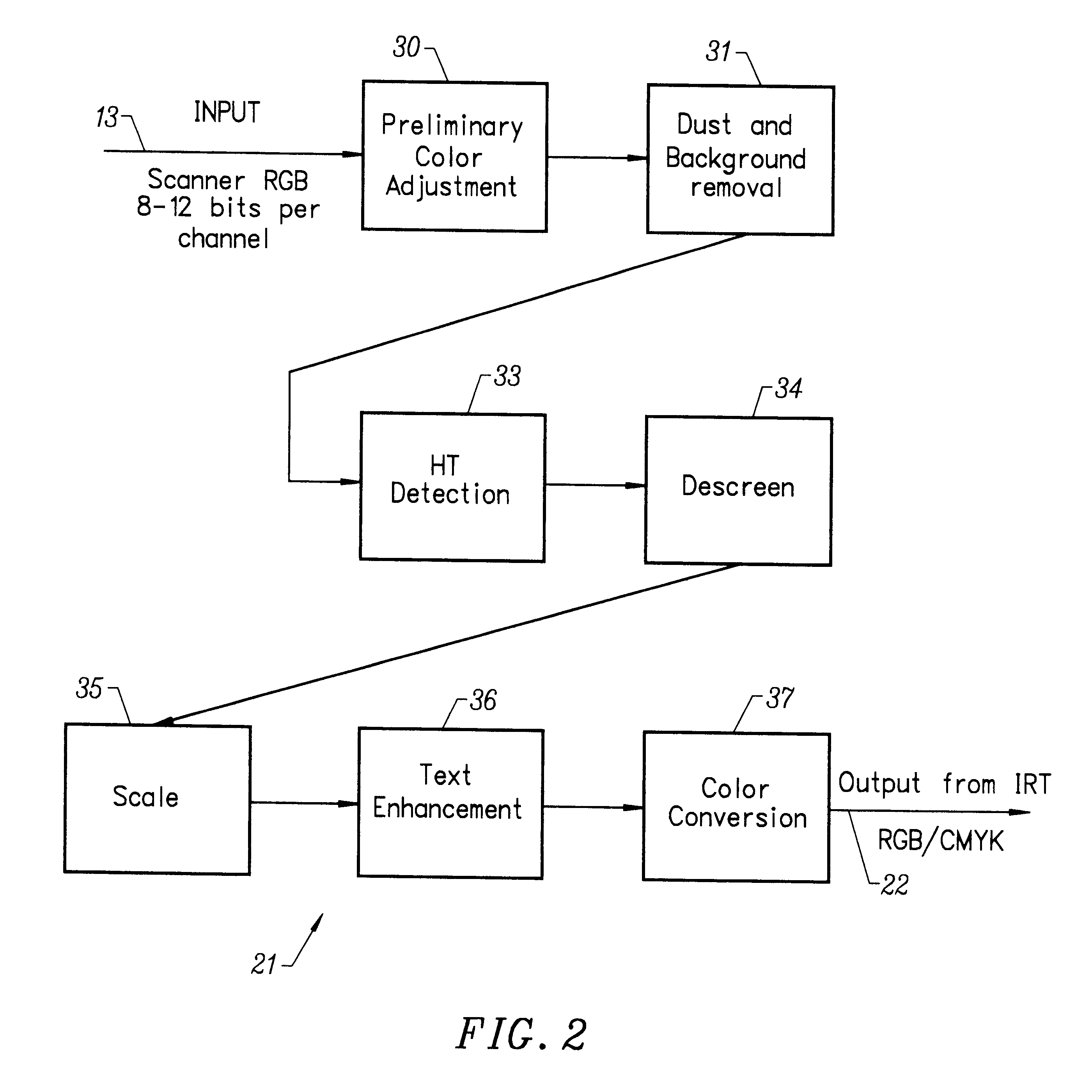Method and apparatus for image descreening
- Summary
- Abstract
- Description
- Claims
- Application Information
AI Technical Summary
Problems solved by technology
Method used
Image
Examples
Embodiment Construction
Consider the following parameters,
T1=24, T2=16,
And consider the following data
After applying the smoothing step, the resulting 3.times.3 data are:
The data are now ready for the marking step. The only pixels that are marked are those for which the threshold T1 is met for all color components, i.e. the marking matrix is: ##EQU4##
Because only two pixels are marked, the center pixel is left unchanged (255,228,150--from the RGB windows above).
Note that when not applying this condition, the variation within each component is high (251, 244, 215 are all >16), and the new value is (186,147,130).
Although the invention is described herein with reference to the preferred embodiment, one skilled in the art will readily appreciate that other applications may be substituted for those set forth herein without departing from the spirit and scope of the present invention. Accordingly, the invention should only be limited by the Claims included below.
PUM
 Login to View More
Login to View More Abstract
Description
Claims
Application Information
 Login to View More
Login to View More - R&D
- Intellectual Property
- Life Sciences
- Materials
- Tech Scout
- Unparalleled Data Quality
- Higher Quality Content
- 60% Fewer Hallucinations
Browse by: Latest US Patents, China's latest patents, Technical Efficacy Thesaurus, Application Domain, Technology Topic, Popular Technical Reports.
© 2025 PatSnap. All rights reserved.Legal|Privacy policy|Modern Slavery Act Transparency Statement|Sitemap|About US| Contact US: help@patsnap.com



